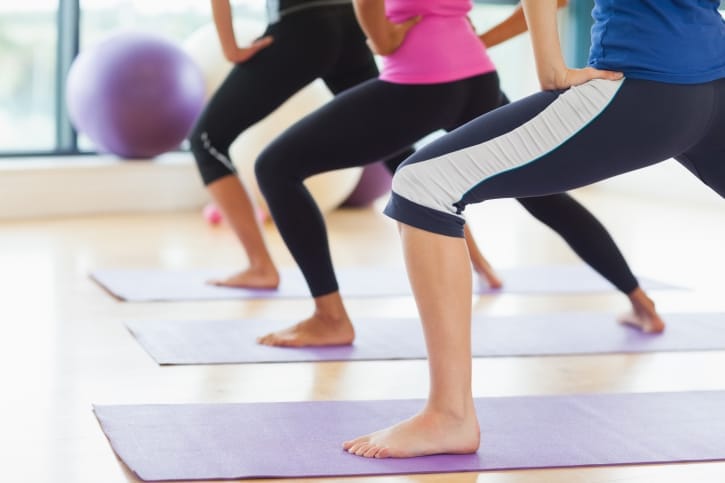
For me, strength and functionality are everything when it comes to any body part, but I realize people also want to work on appearance. Strong and shapely legs are both functional, and (hopefully) beautiful. Many women worry about getting too bulky, and some work too much or too little on the areas they see as an issue for them. A balanced approach is best, combining exercises that aid strength and function, while also correcting muscular imbalances.
Muscles in the leg include the calf and lower leg muscles (gastrocnemius, soleus, peroneals, anterieor tibialis), hamstrings, the quadriceps, and of course, topping it all off are the gluteals (gluteaus maximus, minimus and medius), but we’ll address your bottom dollar in another article! Because the leg muscles support the hips, the knees, and the ankles, a balanced workout will work all of these areas, with an eye for tempering overly strong areas, and strengthening anything that’s weaker.
Choosing the best exercises for your muscles
Lunges
These are great for sculpting the legs. The hamstrings and quads work hard to move your body up and down, and the split stance works your balance and proprioception. The leg in back definitely works hard all the way down through the calf, especially if you are focusing on muscular endurance (using less weight through more repetitions).
Squats
Of course there are lots of different ways to work while performing a squat. The standard form takes you through full range of motion to no more than 90 degrees, much like if you were sitting in a chair. Changing the leg position will change the muscles stimulated, just a bit. For example, taking the legs out wider than shoulder width will create more of a plie (a la ballet), which will work some inner thigh. Keeping the feet together like in chair pose (yoga), will focus the energy a bit more heavily on the quadriceps. Some Barre work is performed with the heels off the floor, engaging the lower leg more.
Dead Lifts
These will tone the backs of the thighs, as well as the glutes and even the lower back. The trick is in the flat back position, and the lift. As you come up, you actively squeeze the hamstrings and glutes, keeping your abs tight for support. That’s the key to really stimulating those muscles. If you’ve never done one, have a trainer teach you the proper form, so you tone and strengthen, without getting injured!
Leg Extensions or Leg Lifts
I qualify this with two options, because if you have knee issues, you must be careful, but you definitely need one of these. Leg extensions can be done on either a machine, using a pulley, or even with an ankle weight, and it works the 4 pieces of the quadriceps, which will strengthen and stabilize around the knee. If you have a problem specifically with your meniscus, opt for the leg lift instead. Always go for light to medium weight, and start the range of motion just forward of 90 degrees, to minimize shearing force. The leg lift keeps your leg straight, so that you won’t aggravate your meniscus. Simply lift and lower the leg, with or without weight, depending on your strength. Remember a well designed program specific to your needs will be helpful and prevent injury.
Leg Press
This is a great way to work everything south of the border, but gives you the ability to add more weight than you may be able to hold with a standing squat. At your gym, you will often find two machine options: one seated, and one lying. The angles are different, so one will work deeper into your gluteals, and one focuses a bit more on the legs. There is definitely an element of personal preference here, as well.
Leg Curl
This works with a close focus on the hamstrings, and again, it can be done with pulleys, ankle weights, or the single plane machine designed for the exercise. Take it easy to start with the weight, as the hamstrings can have a tendency to cramp up as you work.
Calf Raises
For the icing on the cake, I like to add some calf raises. They can be done easily on a step, or even by just coming up onto your toes on the floor. Bolstering extra strength for your ankles, the calf muscles also attach to your knee, and do play a supporting role in knee health and stability. Remember that you also have tendons and ligaments that are supporting structures. These are strengthened with concentrated effort as well.
With some basic exercises, a bit of effort, and a pinch of knowledge, you have the perfect recipe for creating strong, functional, and shapely legs!
Get your own personalized plan!By Melissa Abramovich, Certified Personal Trainer at Elite Sports Club-River Glen